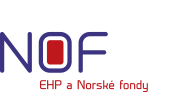Initial status and motivation
The initial motivation for submission of this proposal was to successfully establish the intensive cooperation between two research groups which are interested in same topics on both research and educational level. As both groups are working in the field of computer graphics and namely visualization, the subjects taught by the group members at both institutions, the content of lectures and study materials highly overlap. By sharing the experience in teaching these courses can help to gain new insights and project them to the corresponding subjects at the Masaryk University.
Another interesting level is the research one, where both teams have already established serious background in the field of common interest, which is the molecular analysis, visualization and interactive visual exploration. This currently very popular area has highly practical outputs because the proposed techniques and algorithms serve the biochemists and biologists for exploration of molecular structures. In consequence this can lead to faster discovery on new medication and other chemical matters.
The expertise of the visualization group at the University of Bergen is mainly in the field of interactive visual analysis and one of the largest application domains is related to macromolecules and exploring their structure and behavior. Their latest papers related to this domain were published in BMC Bioinformatics and Computer Graphics Forum. Complementary to their studies, the partner group at the Masaryk University has a long-term experience in studying macromolecular structure and its properties from the computational point of view. The group at the Masaryk University has produced the highly cited CAVER tool for analysis of tunnels in proteins, which was published in PloS Computational Biology. As a next required step, we will join our efforts and share the experience to produce new methods that would substantially improve the quality and understandability of the methods for biochemists.
The overall objective and expected benefit/s of the project
The idea of joining the efforts of both project partners has been already discussed before and this project can now bring this idea to reality. This project proposal aims to show that the outcomes of the cooperation established within this project will have impact on the members of the partner groups as well as on their institutions on the research and education level.
The expected benefits of our mutual cooperation are the following. Our project primarily focuses on the PhD students and on increasing their level of knowledge and research activities leading to completion and successful defense of their PhD theses of high quality and research impact. This would be reached by the long-term stays at the partner institution where the students will focus on attending selected seminars and working on agreed research topics. These topics will be selected in correlation with our aim to join our current research activities in the common field of interest. So the selection of the PhD students participating on this project will be related to their previous research activities and their relation to molecular analysis, visualization and visual analytics. The other benefits coming from the student participation on the common research will lead to increasing publication activity of both partner groups in the given research field.
As the students in general are in our primary focus, our next aim is to use this opportunity to discuss the topics related to education as well. By sharing our experience in teaching subjects related to computer graphics, we will be able to update the content of the lectures according toth. In consequence, this should have the impact onto the students enrolled to these courses and their related activities.
Secondary objectives
The secondary objective of this project is focused on the common research and its outputs. On the research level, we will come from the already ongoing projects which are closely related to the field of molecular graphics, analysis and interaction. The CAVER project running at the Masaryk University (www.caver.cz) focuses on protein analysis and visualization where the main goal is to detect paths leading from the protein outer environment to a specific deeply buried site. This path can be subsequently used for the transportation of small ligand molecule and the chemical reaction between ligand and protein can occur. The product of such reaction can form the basis of new medication. These paths have to be visualized and explored and here the visual analysis and illustrative exploration is very useful. The Physioillustration project at the University of Bergen (http://www.ii.uib.no/vis/projects/physioillustration/index.cgi) concentrates on illustrative visualization. It is a branch of the visualization research field that focuses on interactive expressive visualizations. Visual abstraction, one of the key components of illustrative visualization, follows the abstraction techniques of traditional illustration. The techniques that are cornered with visual styles are called low-level visual abstraction. These techniques defines how to render a certain structure. In addition to these low level techniques, there are another set which focuses on the change of layout or deforming the features in order to increase the communicative intent of illustration. Expressive techniques such as cutaways, breakaways, close-ups, or exploded views are part of the high-level visual abstraction techniques.
Within the project, we plan to adopt methods and principles from the CAVER project to the Physioillustration project and vice versa. This will lead to several common publications and future cooperation on the research level.
